“I speak for the trees” from Dr. Seuss’ The Lorax is a favorite quote used in Joshua Tree National Park’s publications. It’s easy to understand why since the trees look very Seuss-like — odd and quirky. This unique national park is located 140 miles east of Los Angeles and about 35 miles from Palm Springs. Here are some things to do in Joshua Tree National Park with kids (or without too).
What is a Joshua Tree?
It’s not exactly a tree but a distinctive giant yucca plant — native only to the Mojave desert of California, Nevada, Utah and Arizona. This plant grows in an elevation of 2,000 to 6,000 feet and is part of the agave family. The Native Americans who lived here used every part of the tree in their daily lives from shelter to food to clothing.
Like snowflakes, each tree and its number of branches and spiked leaves are unique to each other. It was said that Mormon pioneers named it “Joshua” tree after it reminded them of the prophet Joshua waving at them, arms raised toward the promised land.
Entering the Park
We’ve visited the park several times over the years since it’s an easy day trip from our San Diego home. The park has three entrances: the West (five miles south of Hwy 62 & Park Blvd at Joshua Tree Village), North (three miles south of Hwy 62 & Utah Trail), South (easily accessible on Interstate 10 by Cottonwood Spring).
Each entrance has a visitor’s center so it’s easy to get information, maps and talk to park rangers. And the most important thing, these centers have restrooms.
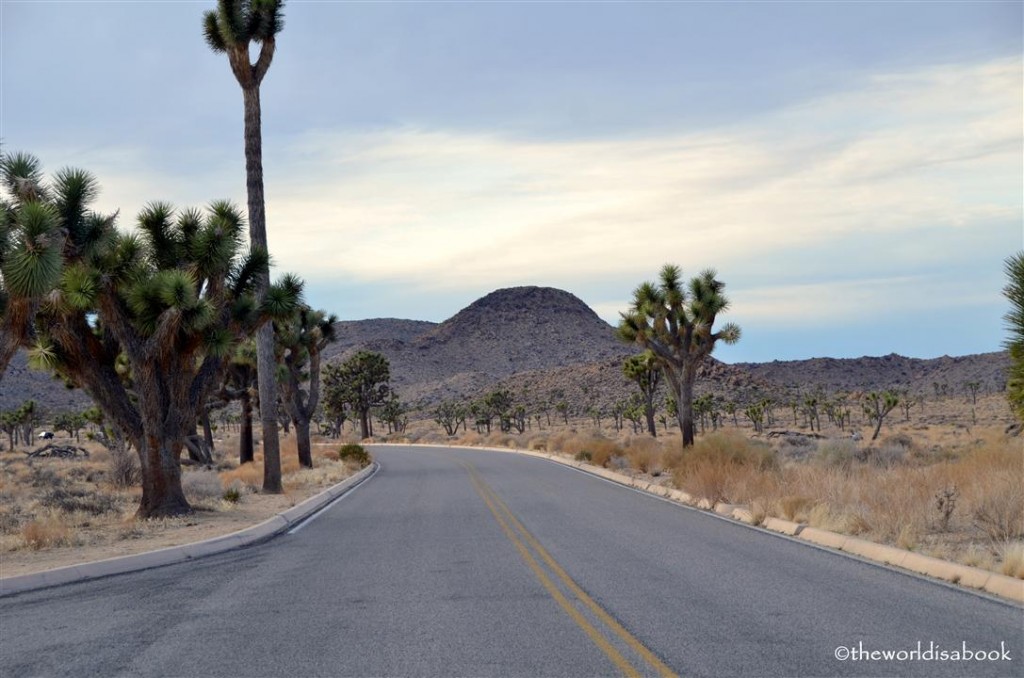
Hiking Inside Joshua Tree National Park
What makes this park unique were the staggering number of boulders and groves of Joshua Trees. The best way to see them up close is by going on any one of the over 70 miles of trails. These can vary based on your time and ability level starting from nature trails to challenging hikes.
Up close, the trees are quite interesting. I found the trees with a large number of branches and spiked leaves to be the most appealing. Seeing rows of these unique trees amidst the desert landscape produced an amazing scenery found nowhere else in the world.
Joshua Tree’s hiking page lists many trails around the park. We’ve never done the moderate or challenging hikes but have done some of the short walks and nature trails. We highly recommend doing the Discovery Trail which is 0.7 mile (1.1 km) loop. It is an easy hike through some boulder piles.
One of the most popular trails is Skull Rock which is about 1.7 miles long loop through some fun rock formations to climb and along the varied landscapes. If you don’t want to do the loop, it is possible to see the appropriately named rock formation from the parking lot and then you can walk to it. Please keep in mind that parking can stretch out along the road for quite awhile around this area during the busy season.
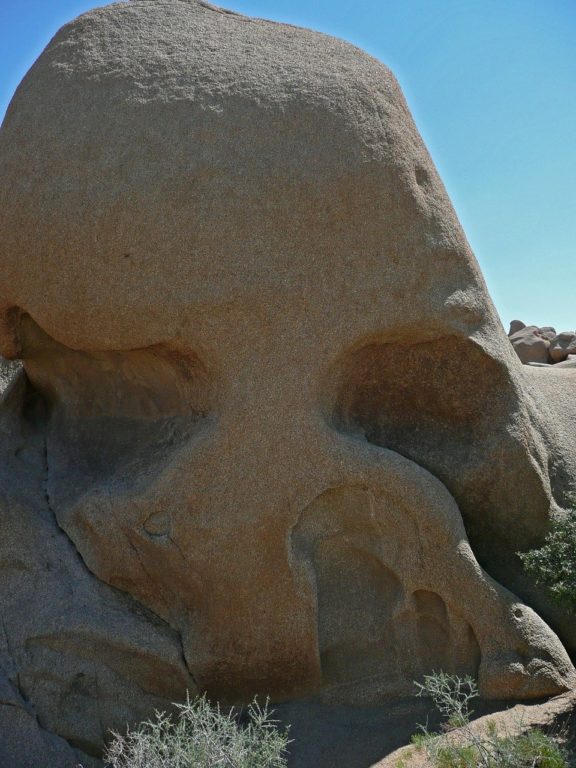
Visit a Cactus Garden
Since this is a desert park, there are plenty of cacti found around here. But, one area visitors shouldn’t miss is the Cholla (pronounced choy-ya) cactus garden that is located about several miles from the Cottonwood entrance. There is plenty of parking to go on the short trail to see these unique plants up close.
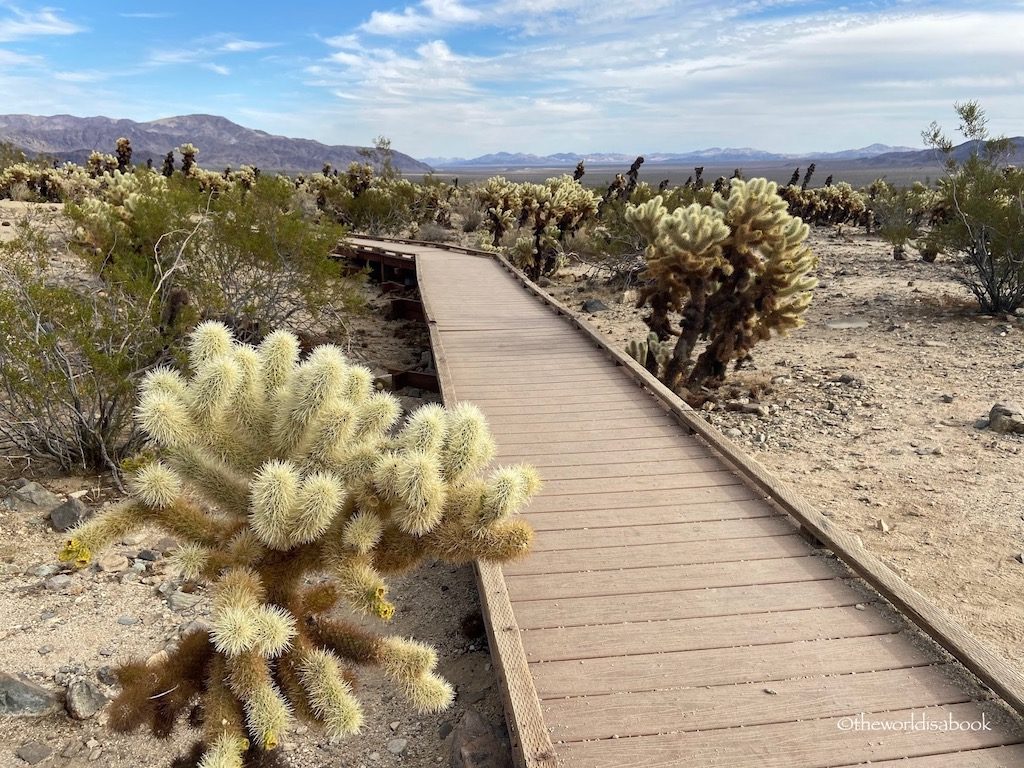
The trail loop is about 1/4 mile (0.4 km) and will take about 15-30 minutes to go around. We’ve always enjoyed visiting this area to see this unique cacti. Some are surprisingly tall. Please make sure to stay on the trail and don’t get too close to the cacti. Trust us, they are very prickly and thorny. See it during non-summer months for its flowers. They make for some interesting photos.
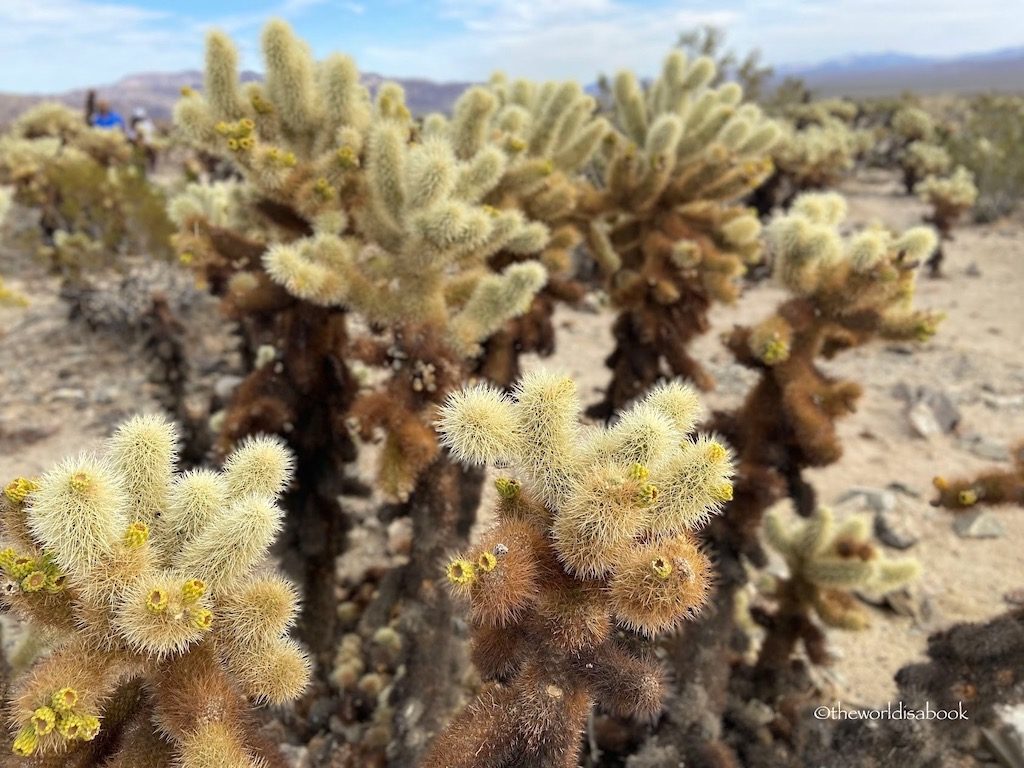
See the Palm Oasis
Many pictures of Joshua Tree are usually brown, dry and desert like. But, there is a section of the park that makes it hard to believe it’s in the desert and definitely worth visiting. There are oasis areas which usually have un-desertlike plants since they have a steady water supply from the groundwater rising to the surface area via geological faults.
While there are some interesting flora, go see the majestic California fan palms. There are five desert fan palm oases in the park which are among the 158 in North America. They’re quite a sight to see with a height that can reach up to 75 feet and can live up to 90 years. Their leaves are massive and the palms’ dead leaves remain on its trunks and look like hula skirts to me.
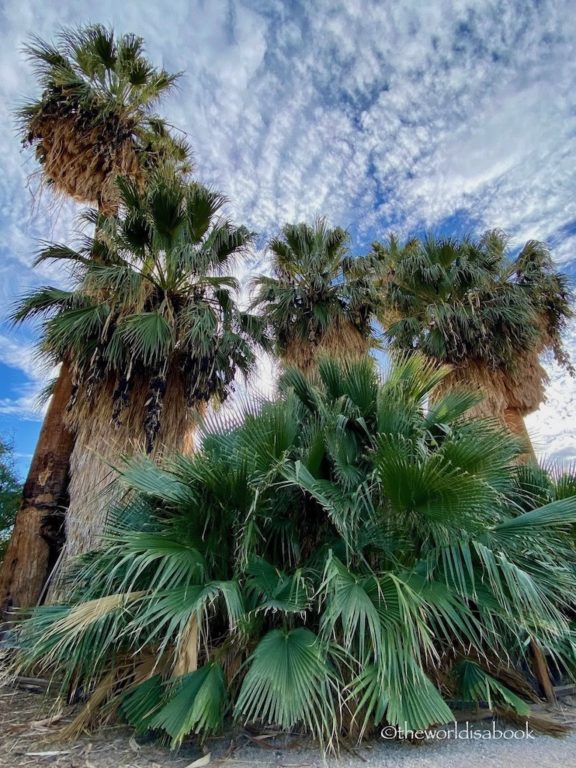
The Oasis of Mara is located behind the Oasis visitor center by the North entrance. It is a 0.5 mile (0.8 km) loop trail that allows visitors to see the fan palms up close. Due to its shade and water supply, oases are a haven for many animals so you may get lucky and spot them under the fan palm leaves or scurrying around the area.
Climb the Rocks/Go Bouldering
It’s hard to miss the huge stacks of rocks and boulders upon entering the park. Some of the boulders looked very neatly arranged. There’s a science to these rock piles and I can’t even begin to explain it. So, for those interested in how these rocks were stacked by the forces of nature, please visit this site.
These boulders were very popular with rock climbers and it always looks fun. The park has over 9,000 rock climbing routes making it one of the best places to visit for avid climbers or those wanting to learn. Look into guided tours that help visitors navigate the trails and boulders. Here are four companies to check out for tours:
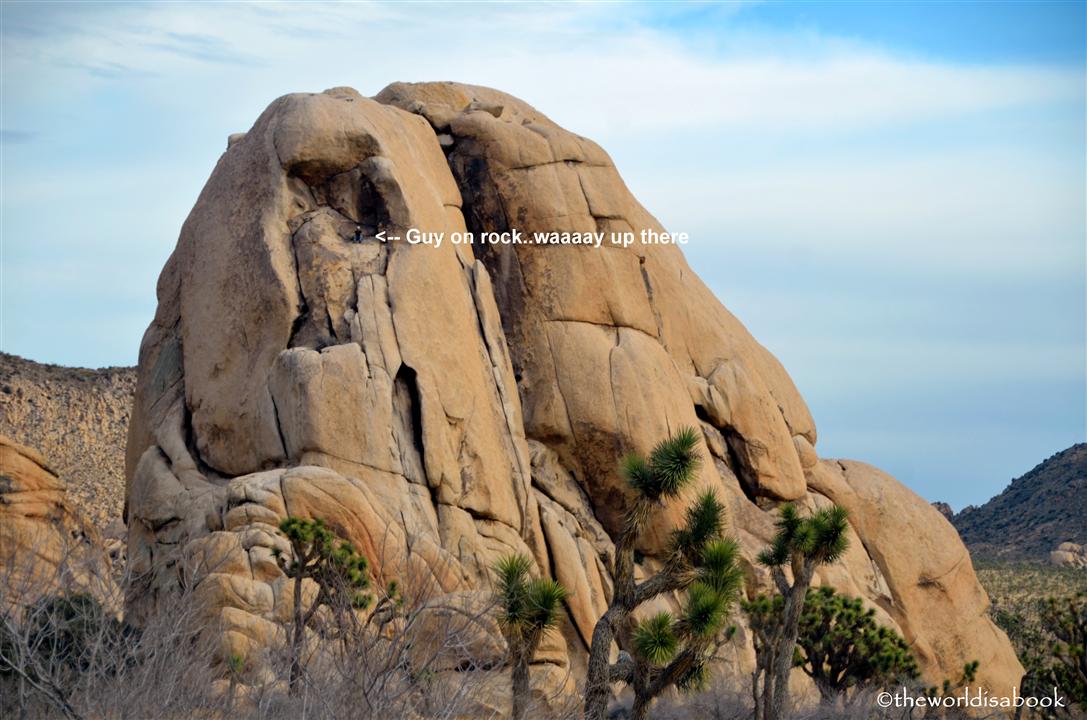
These rock piles were great places for climbing especially with kids. My kids have enjoyed climbing them through the years (more so when they were younger than as teens). There were actually small trails between the rocks to follow to get to some of the landings and platforms at a higher level. It is definitely one of the best natural playgrounds around.
Despite its look of a smooth surface from afar, these rocks were actually pretty rough to touch and hold on to. Watch the kids closely climbing on these rocks. I’ve had my share of nerve wracking moments here when my kids were younger and made their way through the crevices.
The other great thing about these boulders with kids? When my kids were younger, their imaginations always took over. A simple question of — what do you see on that rock formation — stimulated their little brains into overdrive. They always had a great time imagining animals and objects with the rock formations. It made the hikes go a bit faster too.
See Desert Wildlife
Desert animals are fairly common around the park such as lizards, scorpions, jackrabbits, roadrunners and even a desert tortoise. We managed to see a coyote near a campsite once. We were in the car and it ran off as soon as the car inched forward. It was a brief glimpse but one of the highlights for the kids.
The best time to see the animals is during the night. It’s another reason to go camping here.
Go Camping
There are about 500 campsites inside Joshua Tree National Park. Most of them require reservations (do it before getting into the park) and can be booked through recreation.gov. Of course, reserve early, up to six months in advance, if camping during weekends and holidays and during the busy season of November to May.
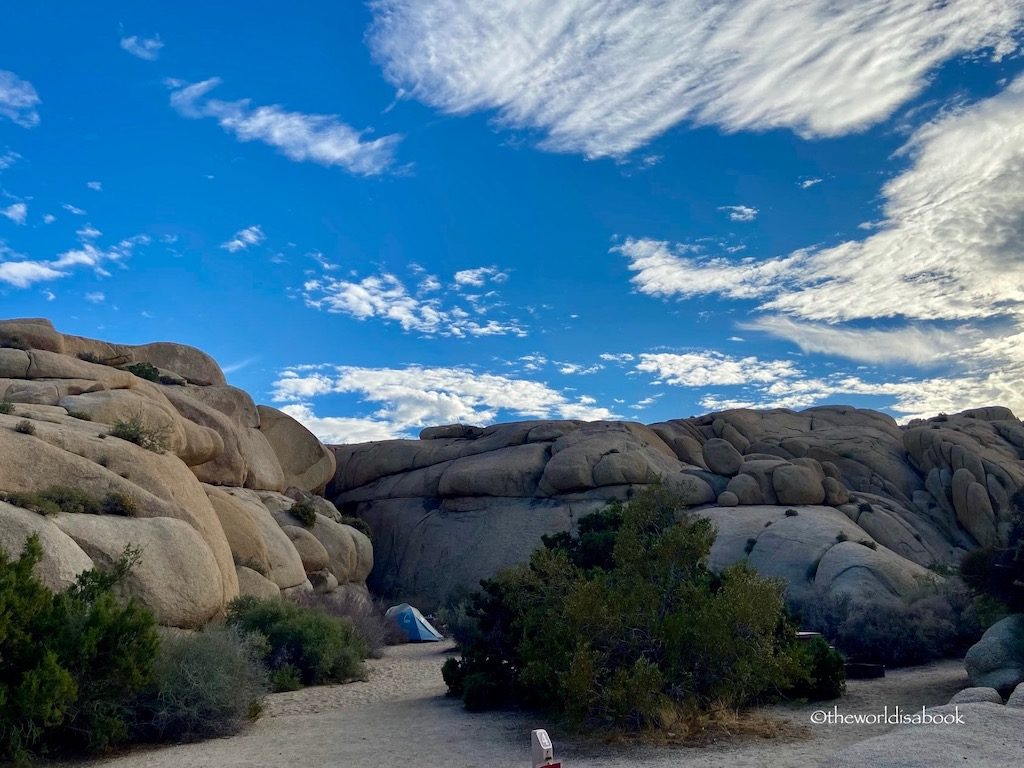
There are also limited first-come, first-serve campsites but go pretty fast especially during the weekends, holidays and Spring. If you want to go with family and friends, there are three campsites (Cottonwood, Indian Cove, and Sheep Pass) that can accommodate groups between 10-60 people. Reservations can also be made up to six months in advance.
Do Some Stargazing
One of the best reasons to go camping inside the park is to take advantage of all the stargazing opportunities here. Despite its proximity to major cities like Los Angeles and San Diego, the park is a designated International Dark Sky Park with some of the region’s darkest nights prime for stargazing and spotting the Milky Way.
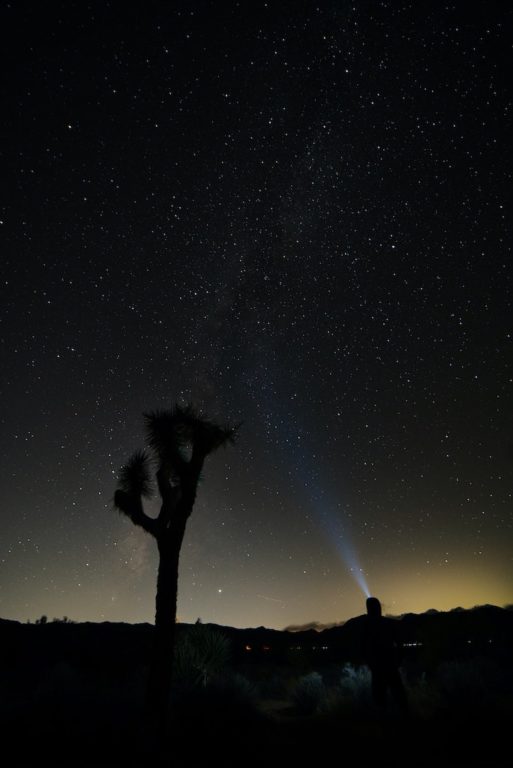
Please keep in mind that some areas of the park are darker than others. There are also ideal times to stargaze like when there is not a bright moonlight shining which reduces the stars’ visibility. Be sure to check for clear and moonless nights. The rangers also provide some Night Sky Programs so please check their events calendar.
Use these useful stargazing tips from Joshua Tree National Park to help make your experience even better including the best way to photograph them.
Be a Junior Ranger
Growing up, my kids always enjoyed taking their oaths with a Park Ranger and loved earning their Junior Ranger badges whenever we visited a National Park. We also liked helping them complete the activities and always learned something.
Kids (ages 5-13) can get their Junior Ranger booklets from park entrance stations and visitor centers. The booklet has several activities kids can complete that range from drawing to participating in ranger programs so they can earn their badges. You can also do the activities virtually if you weren’t able to do them in while visiting the park.
The park also participates in national Junior Ranger programs with fun ones like Junior Paleontologist, Junior Ranger Night Explorer, and Wilderness Explorer. There are also opportunities to do the virtual programs.
While it’s easy to visit Joshua Tree on a day trip, there are many activities throughout the year. It should also be visited at various times of the year. The Joshua trees produce blossoming flowers during the Spring.
Tips for Visiting Joshua Tree National Park
- Visit the Visitor Centers at any of the entrances for maps and trail information and conditions. Ranger-led programs are also available during most weekends.
- Bring A LOT of water. This is a desert park despite what it looks like in these pictures. Dehydration comes easily in this environment. Summer can be intensely and dangerously hot. The park recommends two gallons per person when hiking or biking.
- Pack Food (lots of it). Bring plenty of snacks, sandwiches, etc. There are no stores or restaurants within the park but there were plenty of spots along some of the boulder piles for a family picnic.
- Download the National Park App. Get this invaluable tool before heading to the park on your phone or tablet. It includes interactive maps and activities among other things. There is no cell or Internet service inside the park but visitors can download the content for offline use.
- Gas Up! There are no gas stations within the park so be sure your tank is full when driving through.If you do drive an electric car or especially a Tesla, there is a a charging station by the Oasis entrance by the Oasis of Mara at the North Entrance. There are gas stations outside the towns bordering the park.
- Wear Layers. It progressively gets colder as it gets darker here during the non-summer months. Summer would be a different matter as it is a bit cooler in the morning and gets extremely hot throughout the day.
*Have you visited Joshua Tree National Park?
Pint it for later!
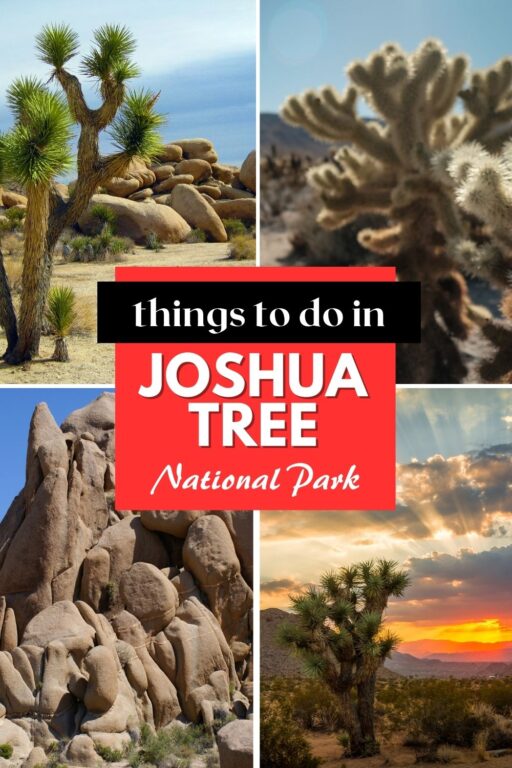
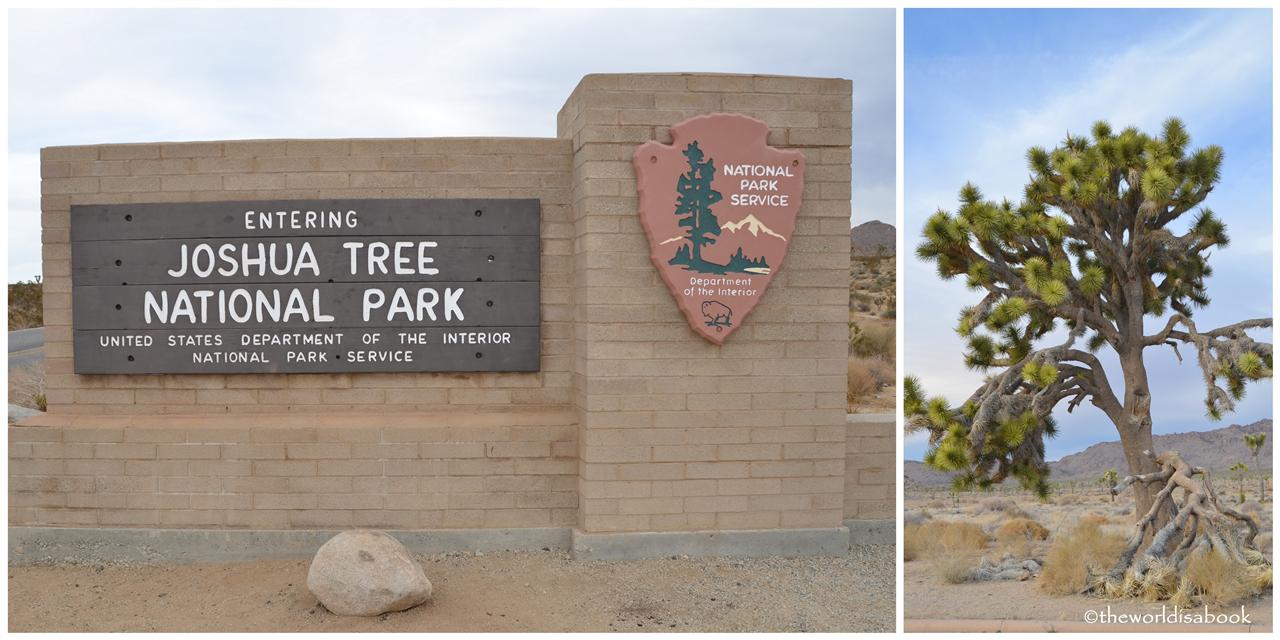
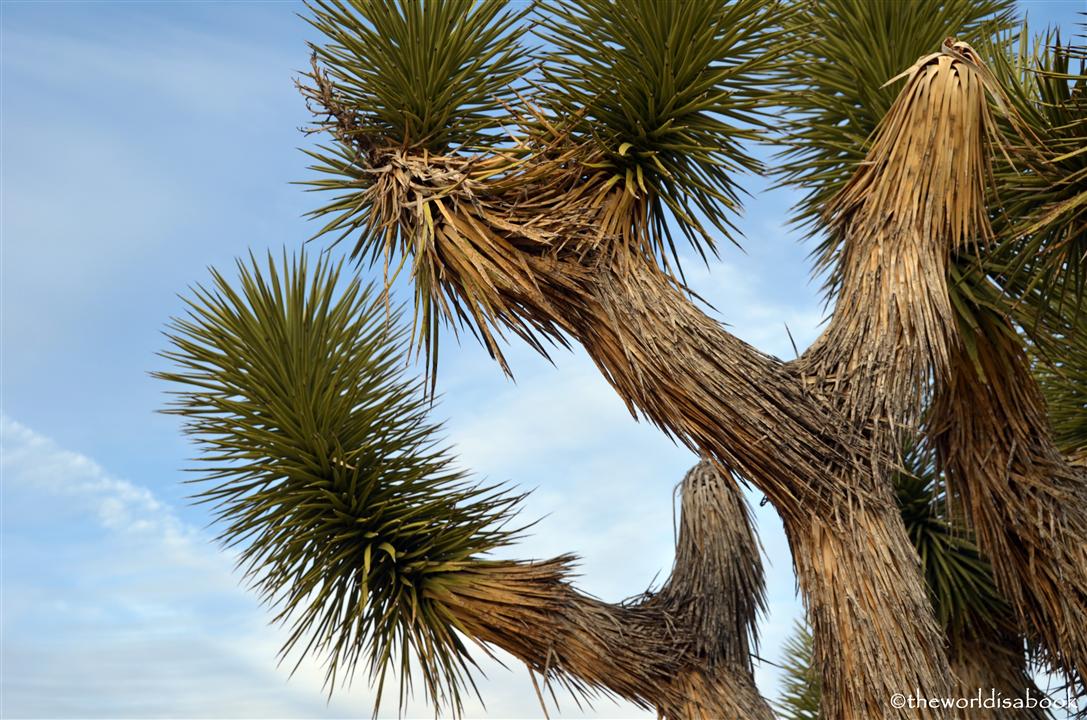
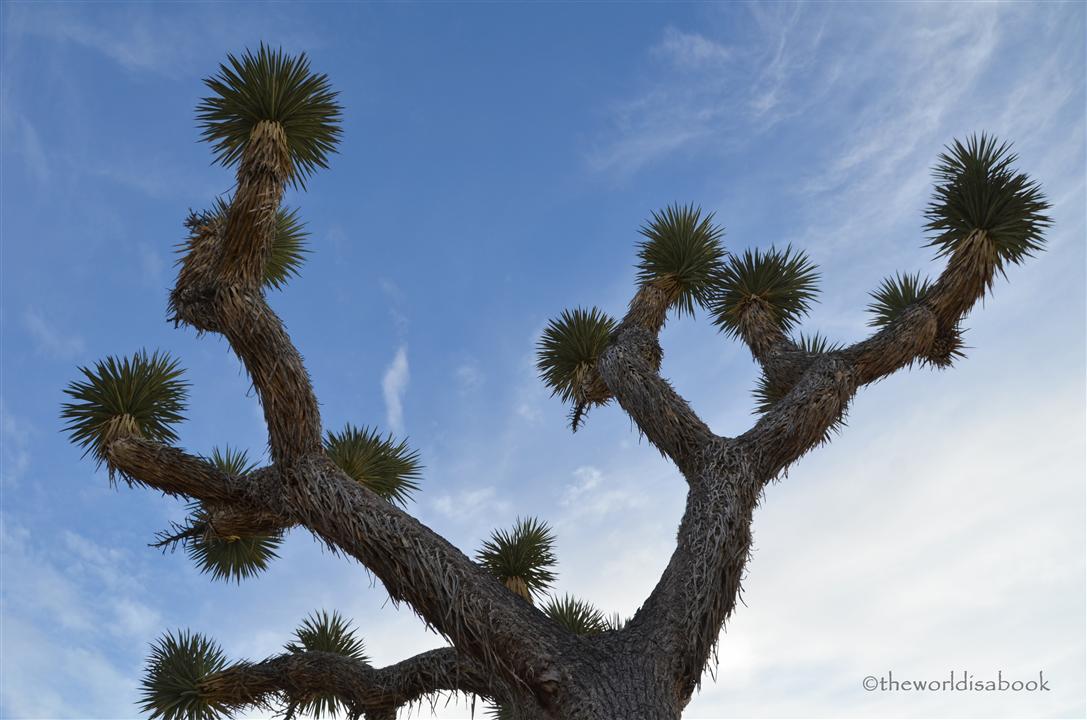
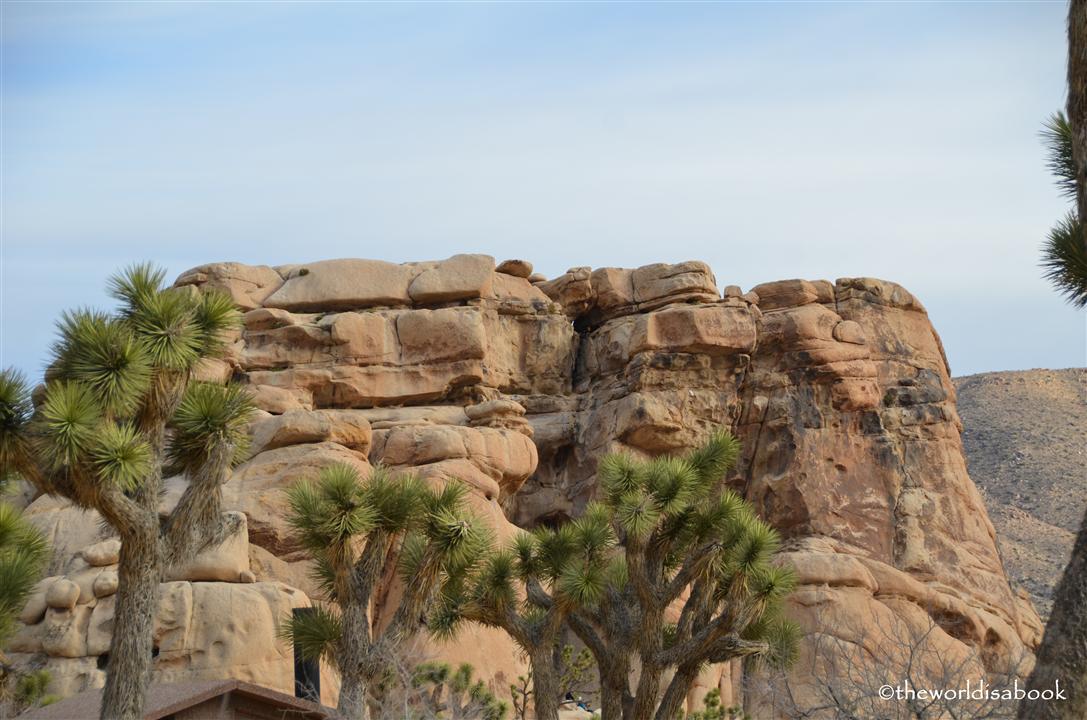
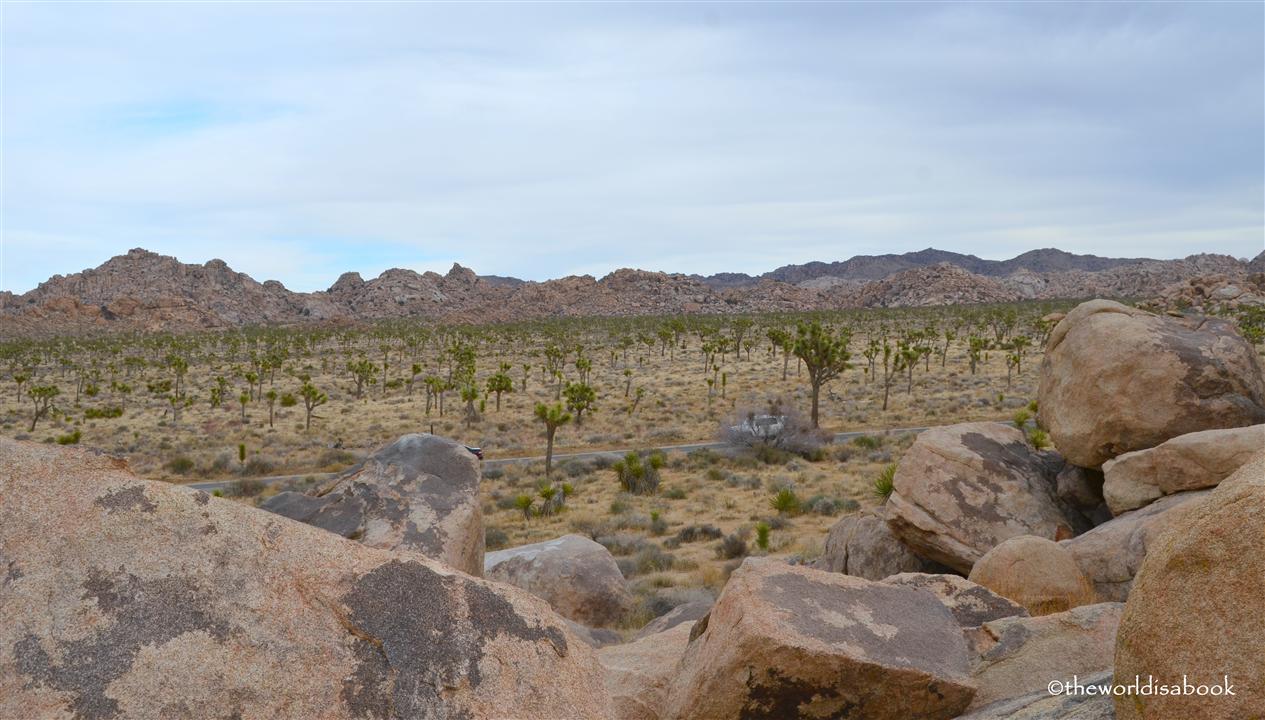
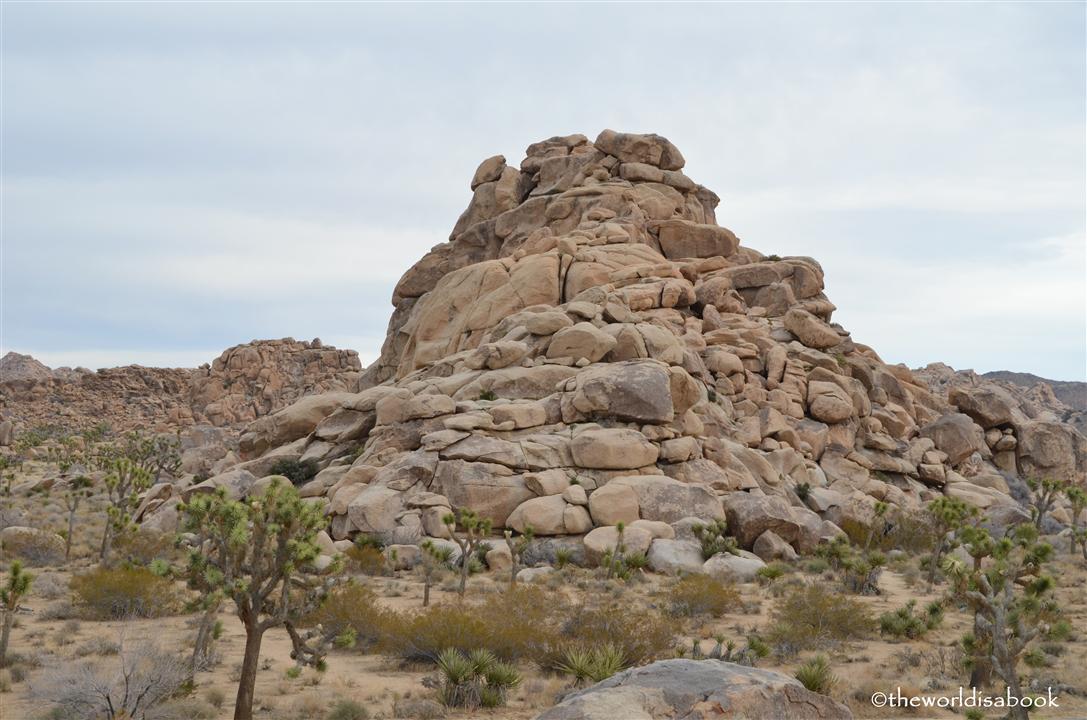
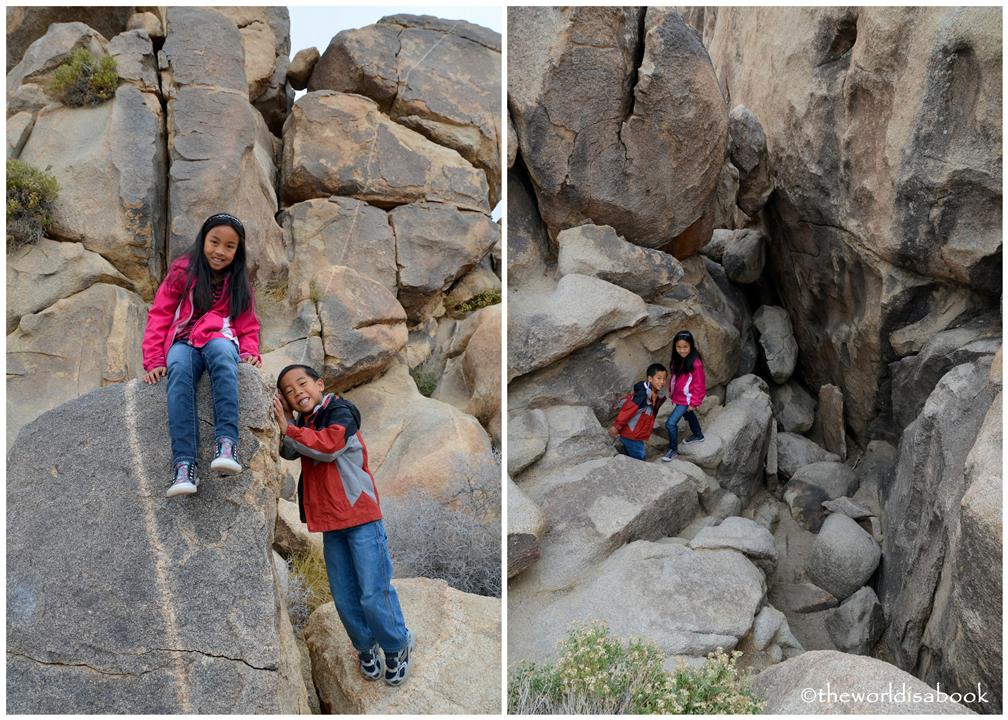
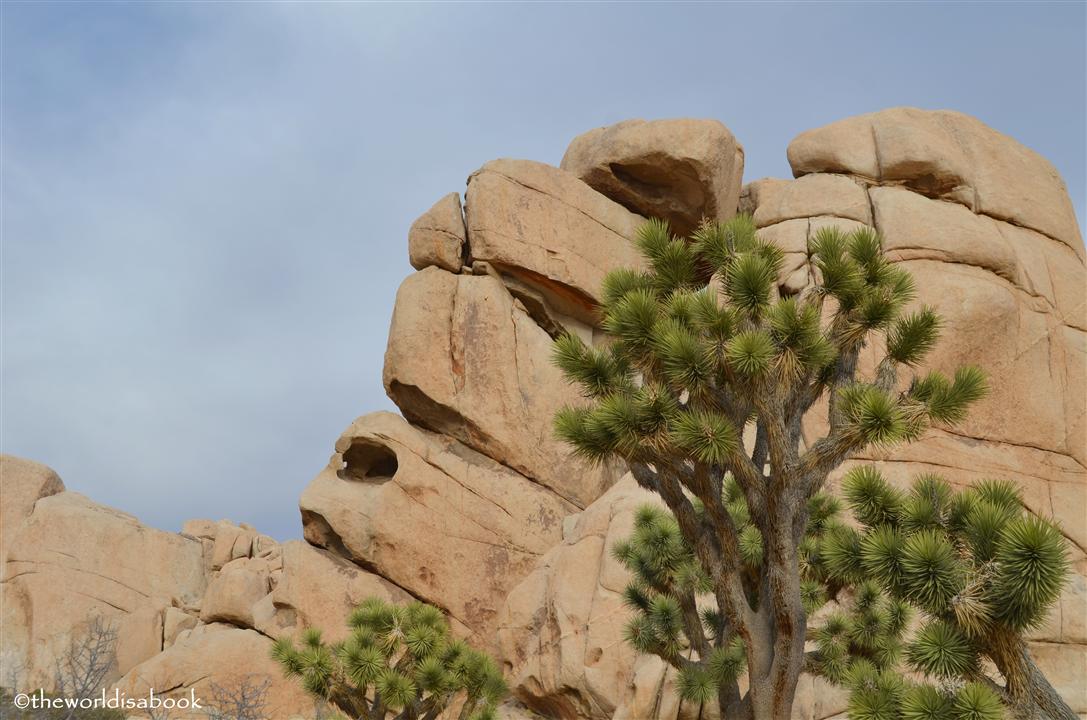
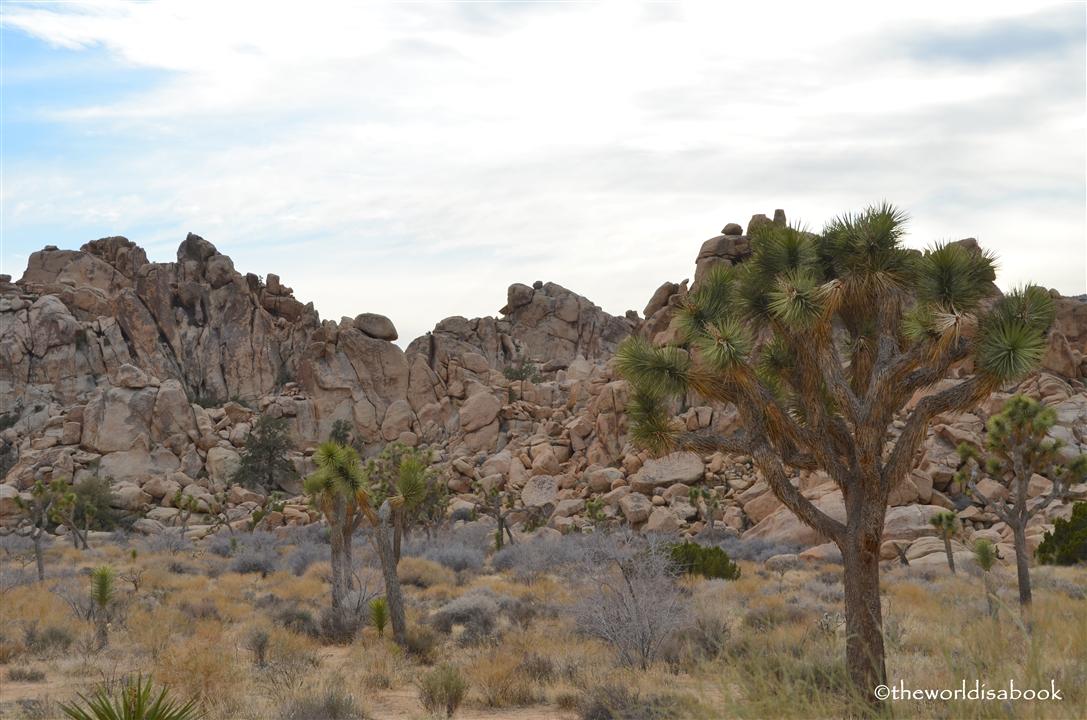
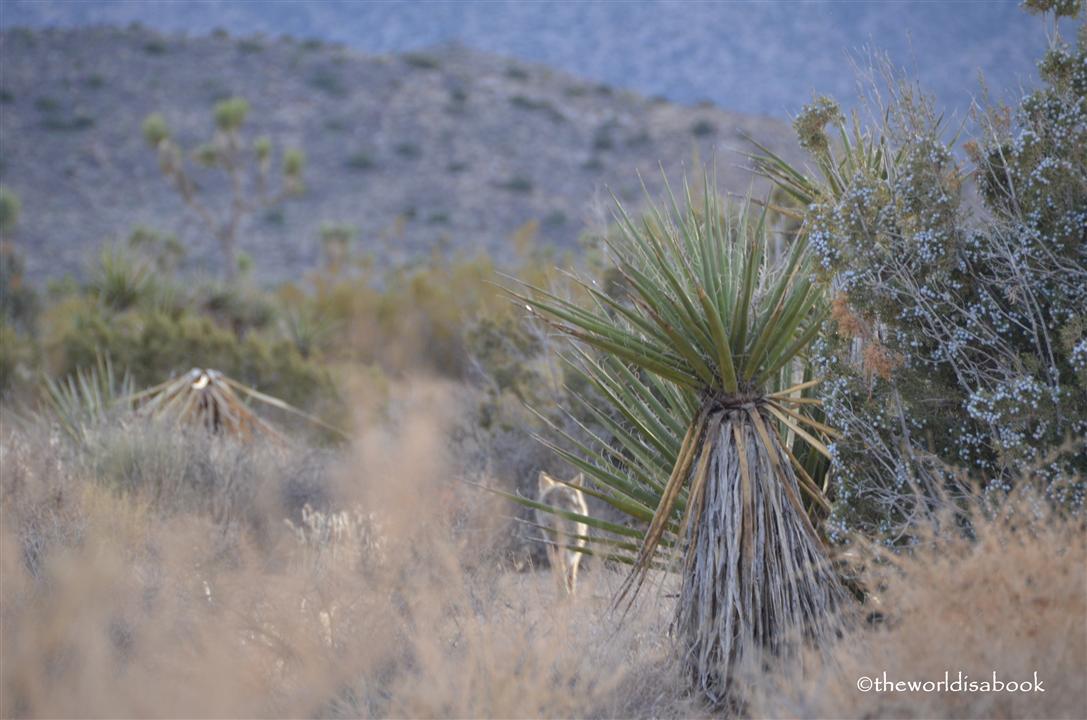
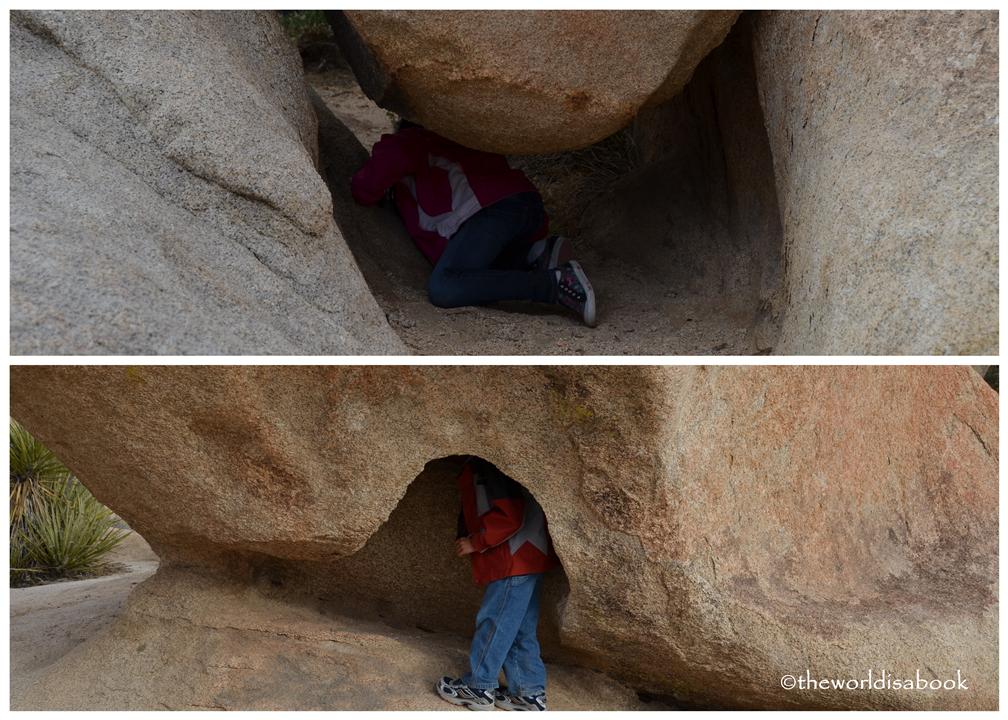
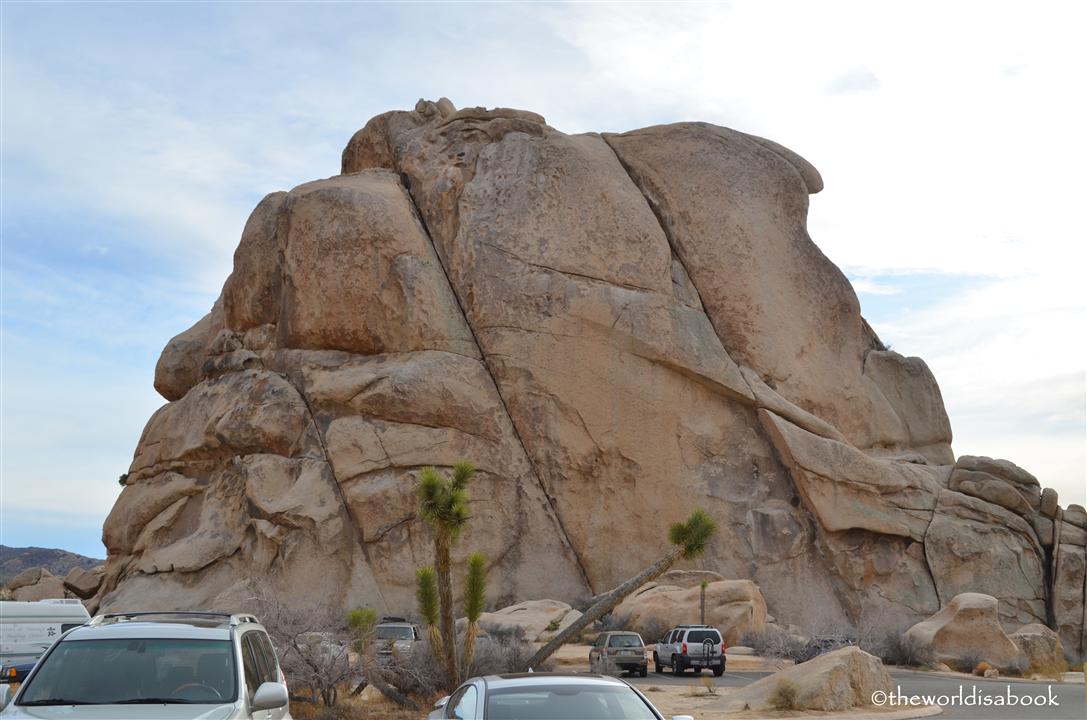
I am hoping to hit this place in the spring, too, so this is great stuff. Thanks for such an awesome review!
Thanks Debi! Looking forward to your post on this one and Channel Islands. Hope you make it there in the Spring.
The trees are so whimsical! Your kids are climbers in the making :)
Yes, they are future rock climbers. It was the least they can do after wishing so badly to join the “real” rock climbers. Thanks for stopping by Gay!
What a cool park! I had heard of Joshua Trees before but had no idea what they actually were. Climbing around on the rocks looks like a lot of fun – but how on earth did that guy get to the top of that rock – it looks far too smooth to climb?!
It was a lot of fun climbing on the rocks. As for the guy, I think he had some climbing equipment nearby. The kids spotted him first of course. There were many sights like this with giant boulders and people high up on top. Very adventurous and daring people!
Awesome Photos! I love Joshua tree national park. I hope you make it back to see the wild flowers.
Thanks Anwar! We are looking forward to seeing the wildflowers and we hope we can catch it at its height of blooming.
My kids would love this one too!
It was fun for adults too =) My kids couldn’t get enough climbing.
Wow! Such great pictures and helpful advice! I can’t wait to check it out soon (hopefully before it gets too hot.)
We’re heading there in a couple of weeks and I’m doing some advance scouting for some information and pictures to share with the kids. Thanks for your post, this is quite helpful!
Gorgeous photos!
We visited Joshua Tree this summer and wow, we loved it! My son was worried about it, he thought the desert would be scary but ended up having a great time especially with junior ranger booklet – such a good initiative!
There is a lot to see and do in the Joshua Tree National Park with kids. The boulders and groves of Joshua Trees are amazing. They are worth going any miles and enjoying closely.